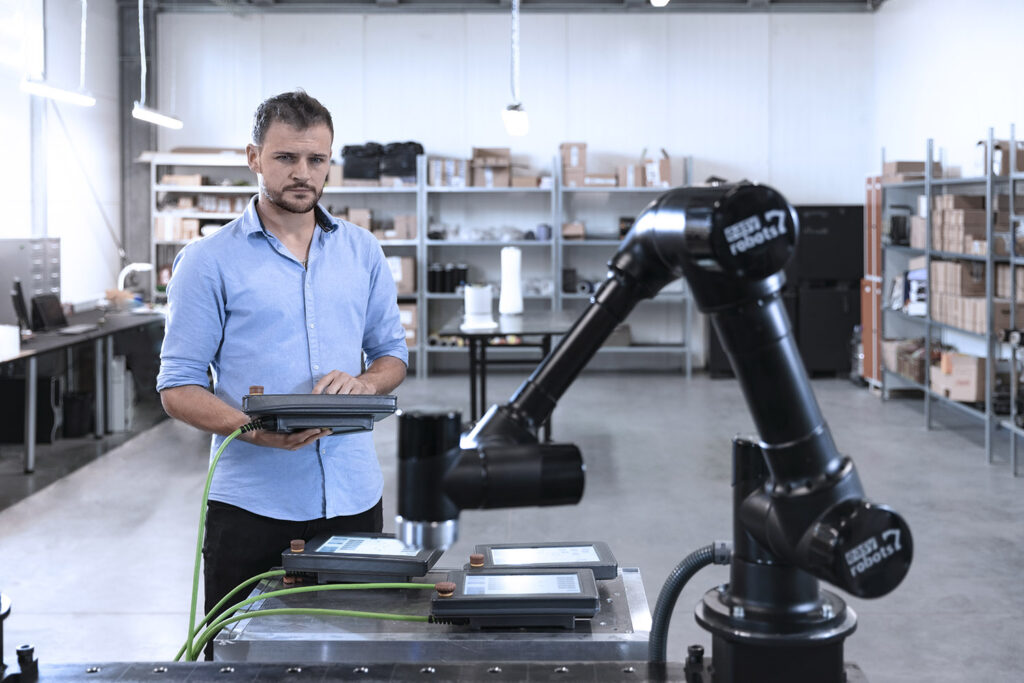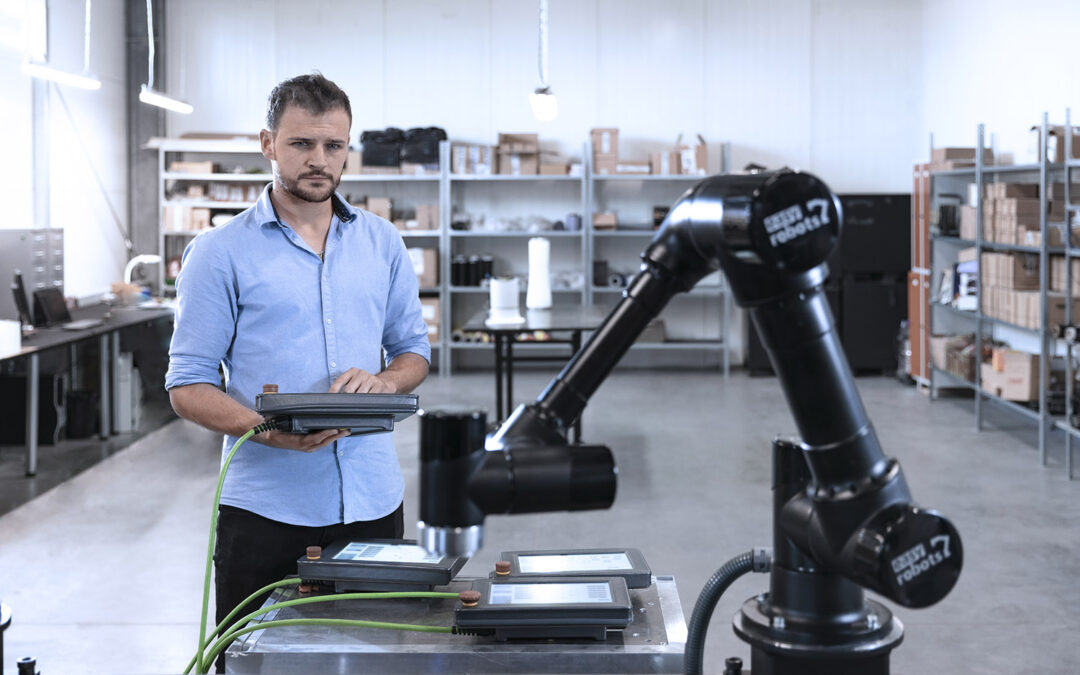Who is an industrial robot programmer and what does the future hold?
More and more companies are implementing industrial robots in their production lines. This also means an increase in demand for programmers who will use the full potential of robotization. The factor that accelerates this process is the pressure to shorten the work cycle time in small-batch production. This is intended to allow for faster introduction of new products and increase the flexibility of factories. Does this mean that an industrial robot programmer is the profession of the future? What does this type of specialist do?
What does an industrial robot programmer do?
Industrial robot performs repetitive activities on the production line - instructions on how to perform its work are provided by a program stored in the memory of the controlling computer. According to the commands contained therein, appropriate drives are set in motion, generating the desired displacement of the robot gripper tip.
Although writing such a program does not seem difficult, it requires appropriate knowledge. First of all, the programmer must understand the kinematics transformations that relate the movement of the work element and individual drives. However, merely reproducing the desired movement is definitely not enough - ensuring the robot's operation without collisions is also a very important element. Program simulation is helpful in this regard and can help detect possible errors, as making corrections to the program can be time-consuming.
The most difficult task that awaits a good industrial robot programmer is program optimization. In industrial production, reducing cycle time by a few percent can translate into huge profits, that's why programming of industrial robots it is primarily about looking for time savings in the robot's operation.

Theory and practice in robot programming
Robot programming It's not difficult - with a bit of willingness and perseverance, you can learn this process from textbooks and the Internet. However, this is a purely theoretical approach that does not contain a key element for this profession, i.e. experience in optimizing a written program. Creating optimal paths requires practice and imagination.
People who have already gained experience as programmers of typical computer languages, such as C, C++ or Python, have a much greater chance of success, because programming of industrial robots is very similar to writing computer programs. Starting to work on robots EASY ROBOTS (equipped with EScontrol software) you can quickly find known functions, loops and conditional instructions. The syntax of most programming languages is similar, which makes it much easier for computer programmers to change careers. Moreover, EScontrol software allows you to compose a program through an intuitive graphical interface, which relieves the user of the burden of remembering keywords and the names of individual commands.
Electrical installation diagnostic skills are also useful - in the absence of a control signal, it can significantly speed up locating the problem, because it does not have to be the program's fault. Robots most often work in teams with other devices, and problems may arise from the connections between them.
Types of industrial robot programmers
There are two types of industrial robot programmers - people programming industrial robots offline users are most often just learning how to move the robot and familiarizing themselves with the interface. This involves writing a program and running its computer simulation without physically using the robot. Such simulation also allows for the detection of serious errors in the designed paths and collision avoidance.
However, it is more important robot programming online – the program is tested directly on an industrial robot and this is also a necessary stage of every programming. Why?
Individual elements of a robotic station are usually not accurately reproduced in the offline environment. When designing optimal paths, the tool sometimes has very little space to make the transition. Due to inaccuracies or lack of mapping of some elements, collisions may actually occur even though the offline program appeared correct.
· Certain parts of the robot behave in ways that are impossible or difficult to predict. Cabling can be an example - only in real conditions can you clearly determine how it will behave in this particular place.
· In addition to uploading the program to the robot, the programmer must also turn on the device, align the axes for the first time, configure and balance the tools, and run the application. Programming industrial robots it is not limited to just writing a program.
· It happens that the robot's operating time from the simulation does not coincide with the actual duration of the work cycle. Then the programmer usually has to continue looking for opportunities to optimize the program to obtain the best possible results.
Programmer of industrial robots of the future
The growing demand for automation and robotization of production processes clearly indicates that robot programmers will certainly not complain about the lack of work. In addition to starting the robot and writing the necessary programs (the number of which increases with a larger database of manufactured parts), robot programming it also includes supervision of their work, introducing corrections and optimizing existing solutions.
The important question is, will online developers be needed in the future? The previously indicated examples show that they are currently necessary for both online and offline implementations.

